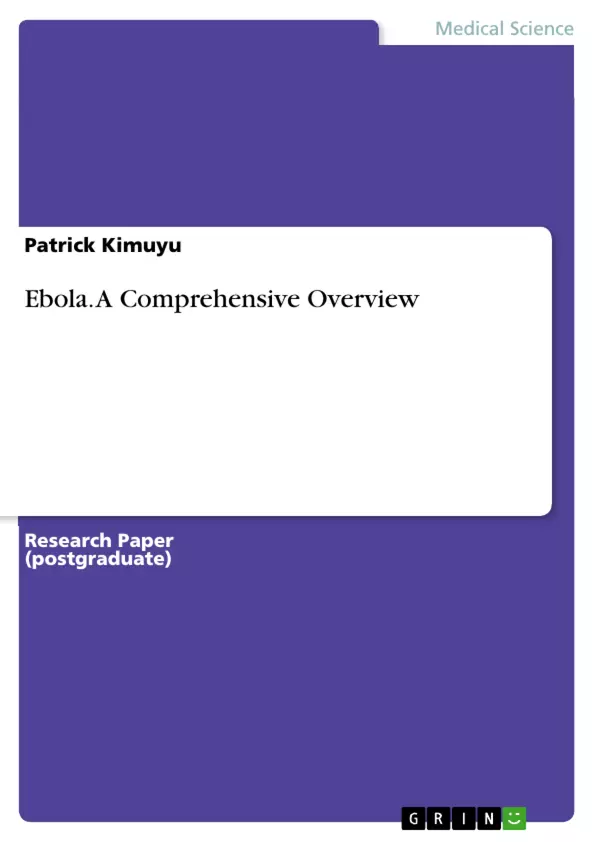This paper will provide a comprehensive overview of Ebola virus disease with emphasis on the clinical aspects: etiology, pathophysiology, clinical manifestations, diagnosis, and treatment.
Ebola virus disease has been identified as one of the most fatal diseases in humans. This disease was first identified in 1976, and it used to be called Ebola hemorrhagic fever since its initial outbreaks in Sudan and Democratic Republic of Congo near Ebola River, simultaneously (WHO, 2015). Since then, there have been perennial outbreaks in Central Africa, but the March 2014 outbreak in West Africa has turned out to be the most catastrophic outbreaks in which over 4,492 people have died from the disease.
Inhaltsverzeichnis (Table of Contents)
- Introduction
- Etiology
- Pathophysiology
- Clinical Manifestations
- Treatment
Zielsetzung und Themenschwerpunkte (Objectives and Key Themes)
This paper provides a comprehensive overview of Ebola virus disease, focusing on its clinical aspects. It aims to explore the etiology, pathophysiology, clinical manifestations, diagnosis, and treatment of the disease.
- The etiology and transmission of Ebola virus disease
- The impact of Ebola virus on the immune system and the development of clinical manifestations
- Diagnostic techniques for Ebola virus disease
- Current treatment options and the challenges in managing Ebola virus disease
- The significance of the 2014 Ebola outbreak in West Africa
Zusammenfassung der Kapitel (Chapter Summaries)
- Introduction: This section provides an introduction to Ebola virus disease, highlighting its history, epidemiology, and the catastrophic impact of the 2014 West Africa outbreak. It also outlines the scope of the paper, focusing on the clinical aspects of Ebola virus disease.
- Etiology: This chapter discusses the causative agent of Ebola virus disease, which is the Ebola virus belonging to the Filoviridae family. It explores the different species of Ebolavirus, their virulence, and the role of the Zaire ebolavirus in the 2014 outbreak.
- Pathophysiology: This chapter explains the mechanisms by which Ebola virus causes disease. It discusses the transmission of the virus from animals to humans and among humans, and the impact of the virus on the immune system, particularly the disruption of neutrophil activity and damage to endothelial cells.
- Clinical Manifestations: This chapter outlines the signs and symptoms of Ebola virus disease at different stages of infection. It discusses the early manifestations like fever, rash, and pharyngitis, and the later manifestations including hemorrhagic symptoms, organ damage, and neurological complications.
- Treatment: This chapter explores the current treatment options for Ebola virus disease. It highlights the lack of specific anti-Ebolavirus drugs and vaccines and focuses on supportive therapy. The chapter also discusses the use of barrier isolation and aseptic handling of body fluids in managing infected patients.
Schlüsselwörter (Keywords)
Ebola virus disease, Filoviridae, Ebolavirus, transmission, pathogenesis, clinical manifestations, hemorrhagic fever, diagnosis, treatment, supportive therapy, 2014 West Africa outbreak.
- Citar trabajo
- Patrick Kimuyu (Autor), 2016, Ebola. A Comprehensive Overview, Múnich, GRIN Verlag, https://www.grin.com/document/383558



